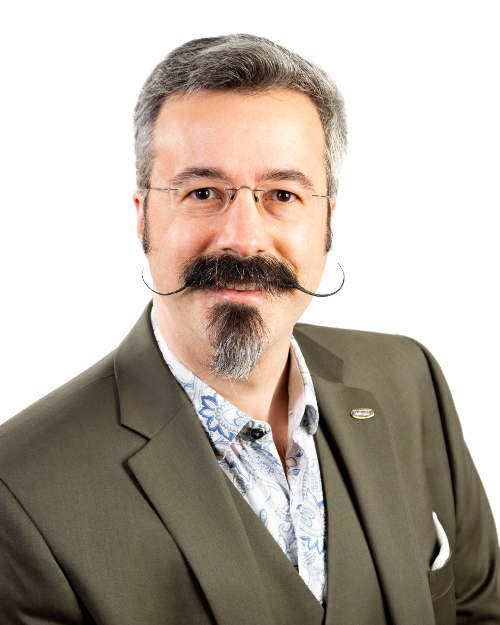Description
This keynote will introduce you to Universal Design for Learning, especially as newly revised for higher education (CAST, 2014). You will discover how to implement UDL in the design of your online course and service interactions, creating spaces for best teaching and support practices to take place—in the classroom and beyond. This is best accomplished through an incremental approach, using a “next 20” series of milestones—achievements that can be attained in the next 20 minutes, 20 days, and 20 months (Tobin & Behling, 2018).
You’ll also find out where to look for help at your institution and in Blackboard: recent research from CAST and the Center for Universal Design in Education suggests that institutions whose faculty-support staff members use UDL, too, see better adoption rates and deeper penetration of UDL principles across all courses (CAST, 2014; DO-IT, 2015). By attending this keynote presentation, you will be able to
This keynote uses active-learning techniques and provides use-them-now resources for participants. Especially by relating UDL to broader access benefits for all learners, this keynote’s activities serve as a model for participants to re-frame accessibility and inclusion conversations.
This keynote posits diversity in its most inclusive form: instead of relying solely on providing accommodation services to learners with disabilities—which is most often a last-minute, ad-hoc, reactive process—adopting UDL as part of an institution’s culture of course design, teaching practices, and support services allows all learners to benefit, regardless of their place on the ability spectrum.
You will leave our keynote with practical, hands-on strategies for expanding access to learning and increasing your chance of success in the classroom, in hybrid courses, and in remote teaching—an outcome for which we have 30 years of evidence-based practice and research (Fonosch & Schwab, 1981; Fichten, 1986; Nelson et al., 1990; Houck et al.,1992; Bento, 1996; Benham, 1997; Bigaj et al., 1999; Cook et al., 2009; Murray et al., 2009; Zhang et al., 2010; Lombardi & Murray, 2011; Murray et al., 2011).

Dr. Thomas J. Tobin
References
DO-IT (Disabilities, Opportunities, Internetworking, and Technology). (2015). Applications of universal design in postsecondary education. Center for Universal Design in Education. University of Washington. http://www.washington.edu/doit/programs/center-universal-design-education/applications-universal-design-postsecondary-education.
Benham, N. E. (1997). Faculty members attitudes and knowledge regarding specific disabilities and the Americans with Disabilities Act. College Student Journal, 31, 124-129.
Bento, R. F. (1996). Faculty members decision-making about “reasonable accommodations” for disabled college students. College Student Journal, 30(4), 494.
Bigaj, S. J., Shaw, S. F., and McGuire, J. M. (1999). Community-technical college faculty members willingness to use and self-reported use of accommodation strategies for students with learning disabilities. Journal for Vocational Special Needs Education, 21(2), 3-14.
CAST. (2014). UDL on campus: Universal design for learning in higher education—a guide. http://udloncampus.cast.org.
Cook, L., Rumrill, P. D., and Tankersley, M. (2009). Priorities and understanding of faculty members regarding college students with disabilities. International Journal of Teaching and Learning in Higher Education, 21(1), 84-96.
Fichten, C. S. (1986). Self, other, and situation-referent automatic thoughts: Interaction between people who have a physical disability and those who do not. Cognitive Therapy and Research, 10(5), 571-587.
Fonosch, G. and Schwab, L. O. (1981). Attitudes of selected university faculty members toward disabled students. Journal of College Student Personnel, 22(3), 229-235.
Houck, C. K., Asselin, S. B., Troutman, G. C., and Arrington, J. M. (1992). Students with learning disabilities in the university environment: A study of faculty members and student perceptions. Journal of Learning Disabilities, 25(10), 678-84.
Lombardi, A. R., & Murray, C. (2011). Measuring university faculty members attitudes toward disability: Willingness to accommodate and adopt Universal Design for Learning principles. Journal of Vocational Rehabilitation, 34(1), 43-56.
Murray, C., Lombardi, A., Wren, C. T., & Keys, C. (2009). Associations between prior disability-focused training and disability-related attitudes and perceptions among university faculty. Learning Disability Quarterly, 32(2), 87-100.
Murray, C., Lombardi, A., & Wren, C. (2011). The effects of disability-focused training on the attitudes and perceptions of university staff. Remedial and Special Education, 32(4), 290-300.
Nelson, J., Dodd, J., & Smith, D. (1990). Faculty members willingness to accommodate students with learning disabilities. Journal of Learning Disabilities, 23(3), 185-189.
Tobin, T. J. (2014). Increase online student retention with Universal Design for Learning. Quarterly Review of Distance Education 15(3): 13-24. http://www.engl.duq.edu/servus/cv/QRDE.UDL.Article.pdf.
Tobin, T. J. & Behling, K. (2018). Reach Everyone, Teach Everyone: Universal Design for Learning in Higher Education. Morgantown, WV: West Virginia University Press.
Zhang, D., Landmark, L., Reber, A., Hsu, H., Kwok, O., and Benz, M. (2010). University faculty members knowledge, beliefs, and practices in providing reasonable accommodations to students with disabilities. Remedial and Special Education, 31(4): 276-286.